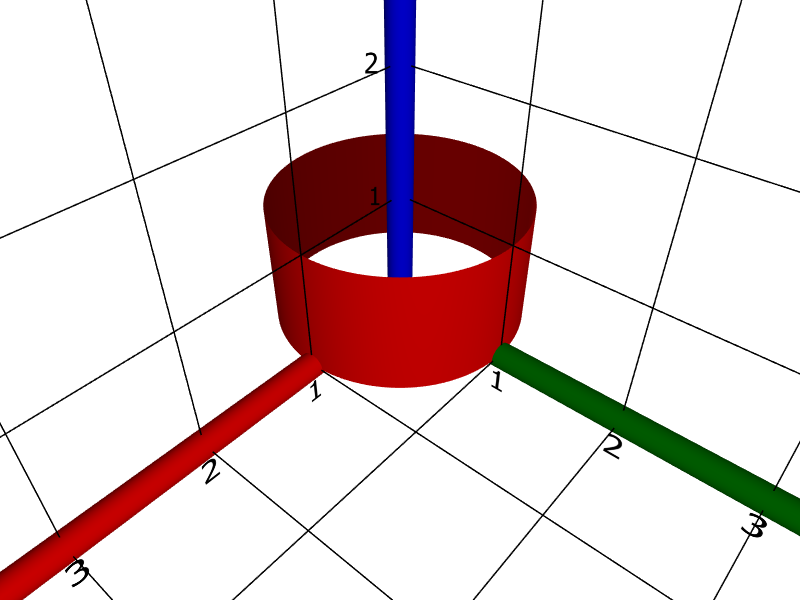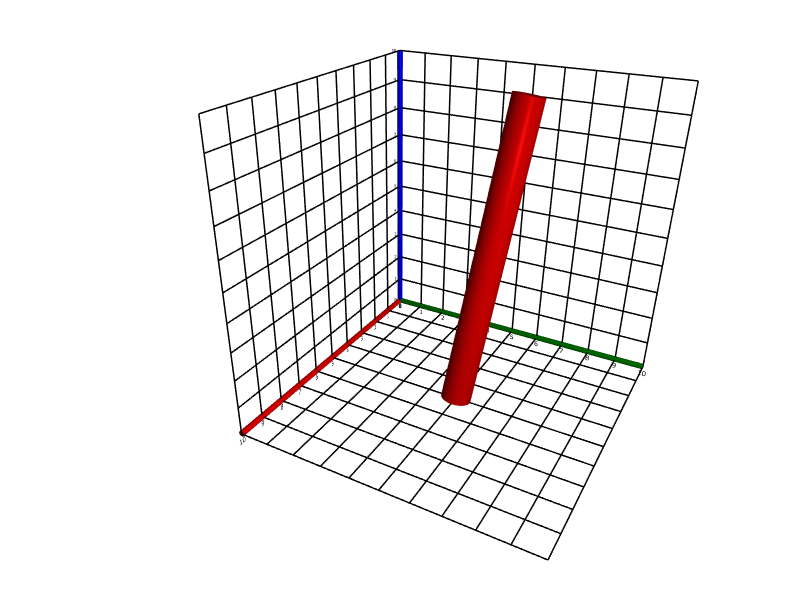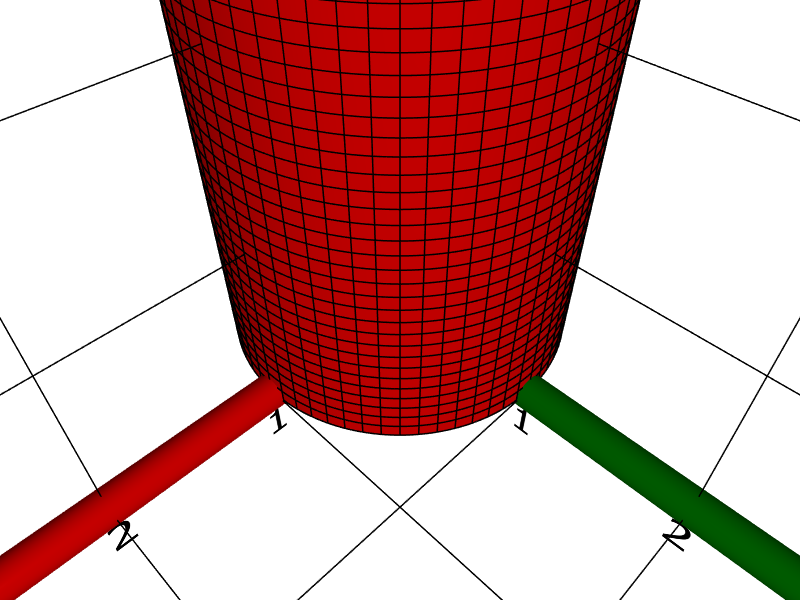cylinder
Creates a new cylinder.
Syntax
-
cylinder([a[, f[, d[, α]]]])-
ais a three-dimensional real vector -
fis a three-dimensional real vector -
dis a three-dimensional real vector -
αis a real number
-
Description
cylinder() creates a circular cylinder (quadratic surface) with radius 1 and height 1 parallel to the z axis, extending from z = 0 to z = 1.
cylinder(a, f, d, α) translates the cylinder by a, scales it by diag(f), aligns it with d, and rotates it an amount α about its axis.
Hence,
-
aspecifies the position of centre of the cylinder’s bottom opening. -
f = (s, t, h)specifies the half-axis lengthssandtand heighthof the cylinder. -
dspecifies the axis of the cylinder. -
αspecifies the rotation of the cylinder about its axis.
If omitted, a defaults to ❨0, 0, 0❩, f to ❨1, 1, 1❩, d to ❨0, 0, 1❩, and α to 0.
The object is shown in the current scene and a reference to the object is returned.
The AdjustVisual function can be used to adjust the appearance of the cylinder. See Visual settings for a list of applicable settings.
Examples
cylinder()

cylinder(❨5, 5, 0❩, ❨.5, .5, 10❩, ❨−.2, .1, 1❩)

cylinder(❨0, 0, 0❩, ❨1, 1, 5❩); AdjustVisual(ans, "show parameter curves": true)

Notes
To create a solid cylinder, use solid("cylinder") instead.